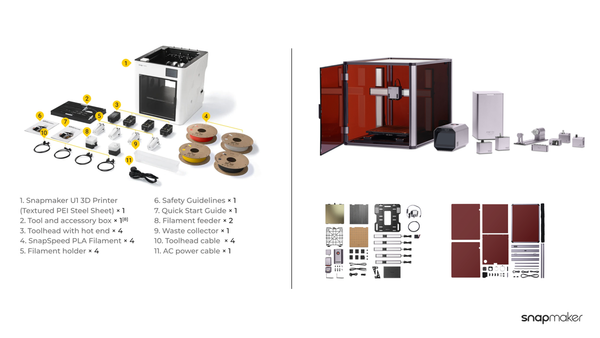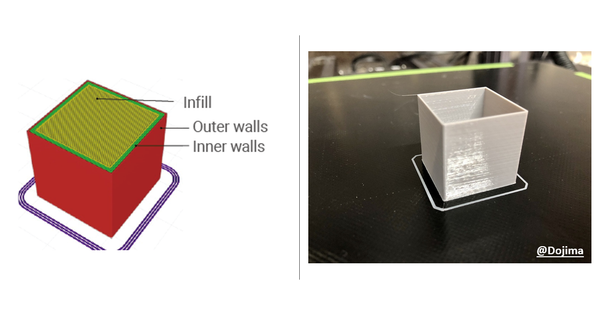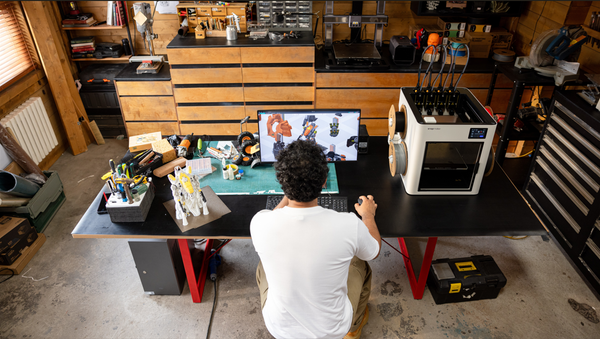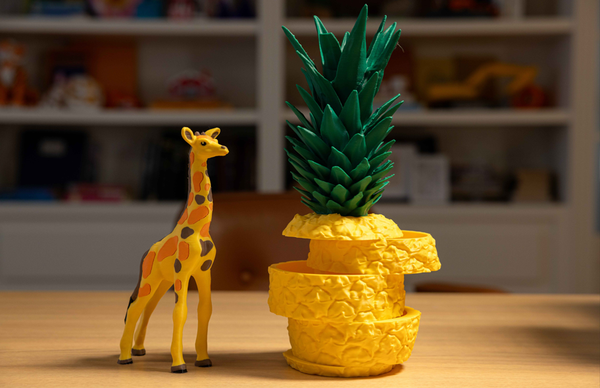StarMaker | Mechanical Neon of My Company
The satisfaction is huge - the neon is eye-catching and it looks just like I imagined.
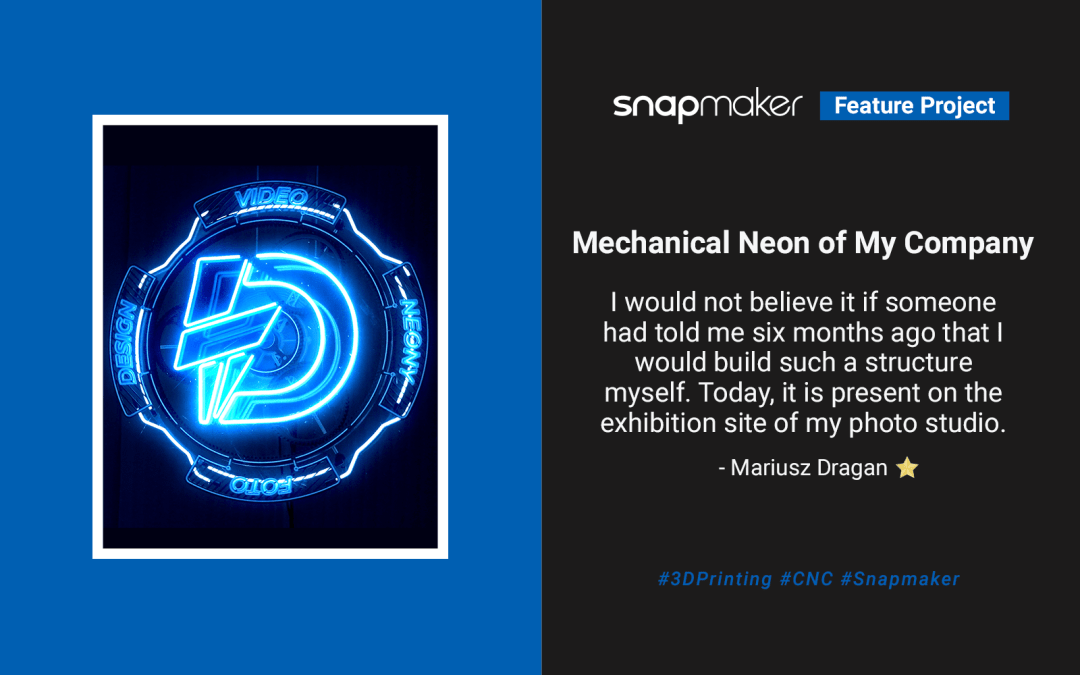

Project: Moving Neon with my logo
Designed and created by: Mariusz Dragan
URL:https://www.youtube.com/channel/UCVX4GK2Rfw_kAGsTiBKFW8Q
3D printer: Snapmaker F350 + CNC module
Software: Inkscape, Tinkercad, Fusion 360, Luban, Cura
Materials:
- Over 1000g PETG black, white, transparent,
- 50g ASA
- Aluminum Pipes ~100cm
- Neon Flex LED blue and white – 540cm
- Electric wire - ~300cm
- Cable connectors
- Ball bearing x 9
- Stepper motor
- Epoxy resin – 50g
- Baking mold – 2 pc
- Tissue box
- Power supply x 3
- Arduino
- Stepper motor driver
- Switch x2
- Touch LED button x 2
- Plexiglass thickness 10 x 40 x 200mm
- Midi socket
- Eight-core-cable – 5m
Plexiglass cutting:
Flat End Mill 1.5 / 3.175
Work speed 1000 mm/min
plunge speed 100 mm/min
step-down 0.2 mm
stepower 1.2mm
Printer settings: PETG
Layer height 0.24mm
Wall line count – 3
Print speed 60mm/s
Wall Speed 40mm/s
Retraction distance 0.1mm
Retraction speed 5.0 mm/s
No supports
Hi Makers,
I present to you my project, made with the use of a 3D printer and CNC module with Snapmaker F350. I named this one - The Mechaneon.
The whole story begins in late 2021. A good friend introduced me to Snapmaker. I decided to use this tool to attempt printing the first three-dimensional projects in my life. I started with small elements like earrings and plates. The first bigger project consisting of several parts was a hanging logo design for my fiancée.
After it was finished, I decided that I was ready to start implementing the idea of a mechanical neon with my logo. The main inspiration was planetary gear. I create double helical gears in Fusion 360 using an addon named Shivel Planetary Gear Maker. This shape of the teeth prevents them from slipping and allows for quieter operation.
Piece by piece, I designed parts of the mechanism. For design, I use free software – my favorite vector app – Inkscape, Tinkercad, and Fusion 360 - home license.
Then I started to make the design into reality.
Most of the parts were printed by PET-G, the most exposed to a load of ASA filament. After some time, I discovered the possibility of changing the color of the filament during printing using Cura. It was a key discovery that amplified my creativity even further.
The design also included bearings, a lot of screws, threads melted into the plastic, a few pipes, and some cables. The Neon LED part is over 5 meters long. I closed the mechanism in a case consisting of ... two baking molds. There are four plates around the mechanism. They can be easily replaced with others. I used epoxy resin to fill the letters.
Another element of the design that I got to know (using the child's curiosity about the world, that I mentioned at the beginning) was the stepper motor driving the planetary gear. There were a lot of glitches along the way to the current sound and work culture of the mechanism. Fortunately, the problems were solved. Practice is the best tutor.
When I finished the neon, I missed the cover for power supplies, the stepper motor driver, and the Arduino. I was thinking about how to do it, however, I did not want to print it all. In the meantime, I bought a CNC module for my Snapmaker. In the end, I found a solution, in my fiancée's office ... She parted with it, without much hesitation. The basis of my power supply and switches housing is.... a tissue box.
For this part of the project, I mainly utilized the CNC. I cut out the vents, and made the plexiglass posts for screwing the individual elements. I was very satisfied with the milling of 10mm Plexiglas parts for mounting the switches. It fits perfectly into the existing opening in the box. The case is connected to the neon light via the MIDI socket. At the very end, I put a fan with a speed controller regulated by the temperature. The whole thing can be hung on the wall. It allows you to turn on/off and adjust the brightness of the neon, as well as turn on and off the stepper motor.
The next step of this design is to make it waterproof. I have done some of the work during the assembly process. I will finish it soon and put it outside.
Let's see the final:


If someone had told me six months ago that I would build such a structure myself, I would not believe it. Today I am proud to present it on the exhibition site of my photo studio. The satisfaction is huge - the neon is eye-catching and it looks just like I imagined. Self-made, combining computer design, 3D printing, and CNC milling with manual work. Looking at it, I take great pride in my creation, and I’m eager to further experiment and create!
Check out a full video on my youtube channel:

